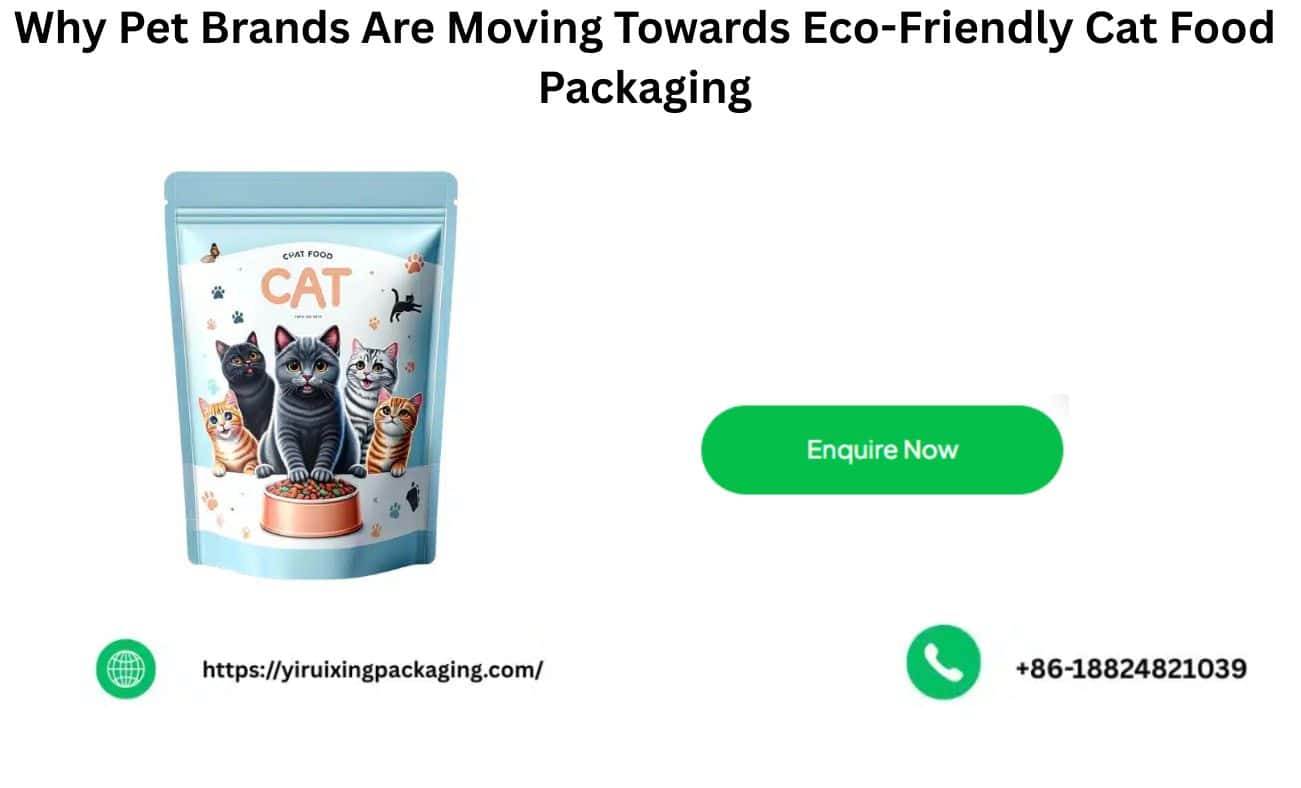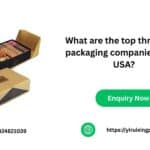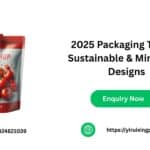Pet owners are increasingly treating their pets as family members — and this change in behavior is inspiring pet companies to rethink their packaging. In China and throughout the Asia-Pacific region, increasing environmental consciousness, stricter regulations, and unambiguous consumer preference are urging producers to eliminate conventional plastic pouches and multi-layer films in favor of recyclable, compostable, or mono-material solutions. Therefore, more intelligent Food Packaging and new custom Food Packaging options that are more flexible are designed to find a balance between shelf life, barrier performance, cost, and a significantly reduced environmental impact. Here in this blog, we explore why pet brands are moving towards eco-friendly cat food packaging.
Table of Contents
ToggleWhat’s changing (fast)
Pet-food packaging is a rapidly growing market, according to numerous industry reports, and at the same time, sustainability is becoming a necessity in the business. Different analysts give various estimates for the global pet food packaging market size, but on average it is in the low-to-mid tens of billions USD (~USD 11–12B in 2024) with steady CAGR projections for a long time into the 208–2035 period and the green packaging division will be even faster (many forecasts show it to be up to 12% or more). At the same time, research reveals that sustainability plays a very important role in choosing a product: one of the studies states that roughly 76% of pet owners take sustainability into account when selecting pet food products.
Why Brands are Switching — The Business Case
- Consumer pull: The market is particularly pushed through pet proprietors who are always looking for eco-friendly alternatives; the various sustainability factors, the one that has the most powerful effect on consumers’ emblem selection and loyalty is the sustainability claims.
- Regulation and retailer pressure: Chinese government policies and environmental, social, and governance (ESG) targets set by retailers are forces that require more environmentally friendly practices, such as recycling and full disclosure of materials, and brands that do not comply with packaging laws tend to use environmentally friendly packaging.
- Brand Differentiation: Eco-friendly features are the key features for expensive and direct-to-consumer (DTC) pet brands that manage to differentiate themselves from the rest in this highly competitive market.
- Innovation in the supply chain: The introduction of new packaging materials, including monomaterial films, recyclable bags, paper-based cartons with barrier coatings, and compostable laminates, has resulted in the development of sustainable packaging solutions suitable for large-scale production.
Key Facts (Bullet Points)
- According to one-of-a-kind analysts, the worldwide puppy food packaging marketplace could be around USD 11-12 billion in 2024 (analyst tiers exist). IMARC Group
- Approximately 76% of puppy owners in Europe take into account environmental elements while selecting puppy food for his or her pets.
- The eco-friendly food packaging market (inside the broader food sector) is predicted to be around USD 274B by way of 2025, which absolutely suggests the huge investor/enterprise interest in sustainable formats.
- China’s pet packaging market is expected to experience significant growth through 2035, with some expert reports projecting the market value in the multi-billion USD range.
Comparative Snapshot — Common Packaging Options
| Format | Pros | Cons | Sustainability note |
| Multi-layer plastic pouches | Excellent barrier, lightweight, low cost | Hard to recycle | Widely used but being phased out in favor of recyclable/mono-material |
| Mono-material PE or PP pouches | Improved recyclability retains barriers | Slightly higher cost, tech refinements needed | Growing adoption as a recycling stream is maturing |
| Paper-based cartons with barrier coating | Natural look, recyclable in some streams | Barrier/coating compatibility, shelf-life limits | Strong marketing appeal; good for dry food and treats |
| Compostable laminates (PLA, starch blends) | Industrial compostability strong eco claim | Composting infra limited; cost | Best for niche/small runs where disposal infrastructure exists. |
How brands make it work (practical tactics)
- Change over to mono-material films for better recyclability with no loss of pouch convenience.
- Present refill formats and sizes in bulk to cut down on packaging per serving.
- Implement transparent labeling and consumer education- recycling/composting guidelines raise correct disposal and brand trust.
- Collaborate with custom Food Packaging suppliers who are able to adapt barrier properties, printing, and verification technologies (QR codes, consumer transparency).
A voice from the field
“Sustainability is no longer a choice, but rather it is the deciding factor in brand selection by pet owners. Up to the standards of a responsible company, the packaging has to be such that it serves the purpose of guarding the product quality,” goes the industry comment, which summarizes the results of the recent market surveys. The same studies bring out that the recyclable claims are the strongest and most accepted by the buyers.
Conclusion
The move to earth-conscious cat food packaging is an outstanding illustration of the industry’s transformation by the merging of consumer preferences, regulations, and technology. Pet companies that are catering to the Chinese market—or manufacturing in China—working closely with suppliers who know the ins and outs of Food Packaging that not only meet the barriers but also are recyclable and cost-effective, is a must for their business strategy. Yiruixing Packaging is one of the companies that is ready to offer this and more with its eco-friendly and versatile packaging solutions designed exclusively for pet food companies in China and elsewhere.
FAQs
Is eco-friendly packaging as good as traditional plastic pouches?
In the bulk of cases, yes. The state-of-the-art recyclable mono-material pouches and paper-based luggage have not only reached however now and again also surpassed the barrier safety degrees of plastics, for this reason permitting them to keep food and safety. You might understand the simplest minor changes in texture or elasticity.
Will switching to eco-friendly packaging increase the price of my cat food?
At times, just a little, to be clear, sustainable materials may have a slightly higher price tag. However, numerous companies are cooperating with providers in order to find a compromise between cost and eco-gain. For the majority of consumers, the difference in cost is most of the time tiny and pleasing because of the environmental effect.
Does eco-friendly packaging affect the freshness of my cat’s food?
Not any longer. The latest recyclable substances are capable of providing the best barriers against moisture, oxygen, and aroma. A lot of brands do shelf-life tests before changing their packaging, but those tests are quite often extensive. Thus, the cat’s food will be as fresh as before, at times even fresher, as the technology for packaging is still advancing.
Are Chinese packaging suppliers reliable for sustainable cat food packaging?
Indeed, a lot of packaging manufacturers in China have become pretty sophisticated and are imparting green, compostable, and tailor-made Food Packaging solutions. They spend money on studies and development and adhere to rigorous export necessities. Yiruixing Packaging, as an instance, is an enterprise that is recognized for customer-unique merchandise, dependable, exceptional, and green substances.





